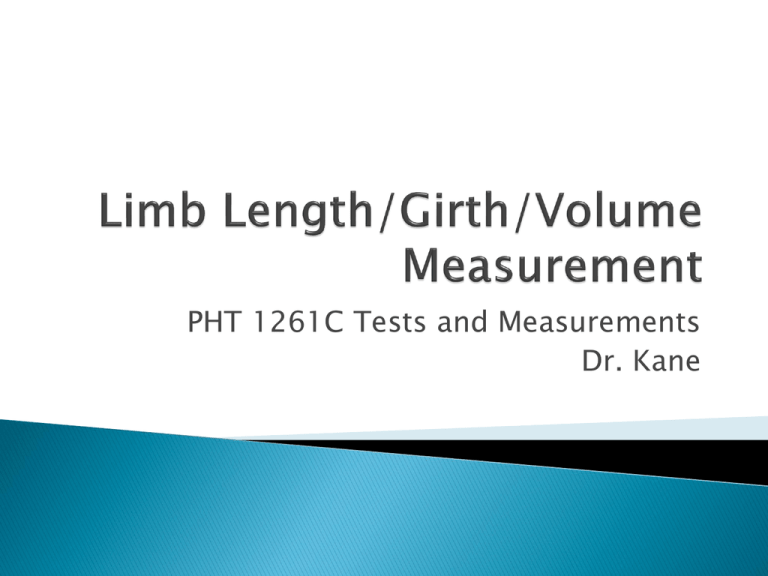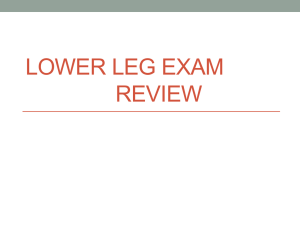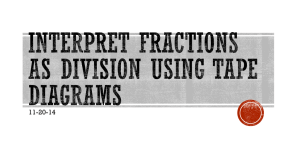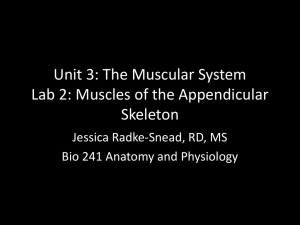Limb Length/Girth/Volume Measurement
advertisement

PHT 1261C Tests and Measurements Dr. Kane Definition – anthropometry ◦ What is it? ◦ Why is it important? Edema Localized swelling Joint effusion Muscular changes Asymmetry of body parts Effects of surgical procedures Aids clinician in determining pt.'s impairments to provide the appropriate treatment Provides baseline data information to monitor progress and outcomes Provides feedback & motivation for patients Aids in designing equipment and materials for special populations Provides info in design of objects and spaces used by normal population Tape Measure Steel Tape Volumeter Anthropometer Calipers Perometry – infrared laser Bioimpedence Measure in cm Place the tape measure flat on the body The tape measure should be stretched out and not slack If the segment to be measured is irregular or conical in shape, the proximal part of the tape should be flat When measuring circumference, surround the body part without undue constricting pressure Indications ◦ Upper Extremity Arm Forearm ◦ Lower Extremity Thigh/Femur Leg Indications Upper Extremity ◦ Arm ◦ Forearm Lower Extremity ◦ Thigh ◦ Leg Other areas ◦ Hands, feet, waist, hips, head Indications True (anatomical) vs. Apparent (functional) ◦ A difference of 1.0 to 1.5 cm is still considered normal but may be symptomatic ◦ Valid & Reliable ◦ Sources of error – muscle bulk, clothing, palpation True Leg Length ◦ ASIS ◦ Medial Malleolus ◦ Lateral Malleolus Specific location of difference ◦ ASIS to greater trochanter – hip valgus/varus ◦ Greater trochanter to lateral joint line – femur ◦ Medial joint line of knee to medial malleolus – tibia Interpreting results Apparent Leg Length ◦ Indications ◦ Landmarks: Umbilicus Medial Malleolus ◦ Interpretation Common etiologies of true leg length discrepancies: • Idiopathic developmental abnormality • Fracture • Trauma to epiphyseal plate • Legg-Calve Perthes Disease • Malignancies • Infections Common etiologies of apparent leg length discrepancies: • • • • • • Soft tissue shortening Joint contractures Ligamentous laxity Foot mechanics LBP Scoliosis Indirect Method of Measuring Leg Length - done through palpation of bony landmarks such as the ASIS or the iliac crest - use of blocks of given thickness











